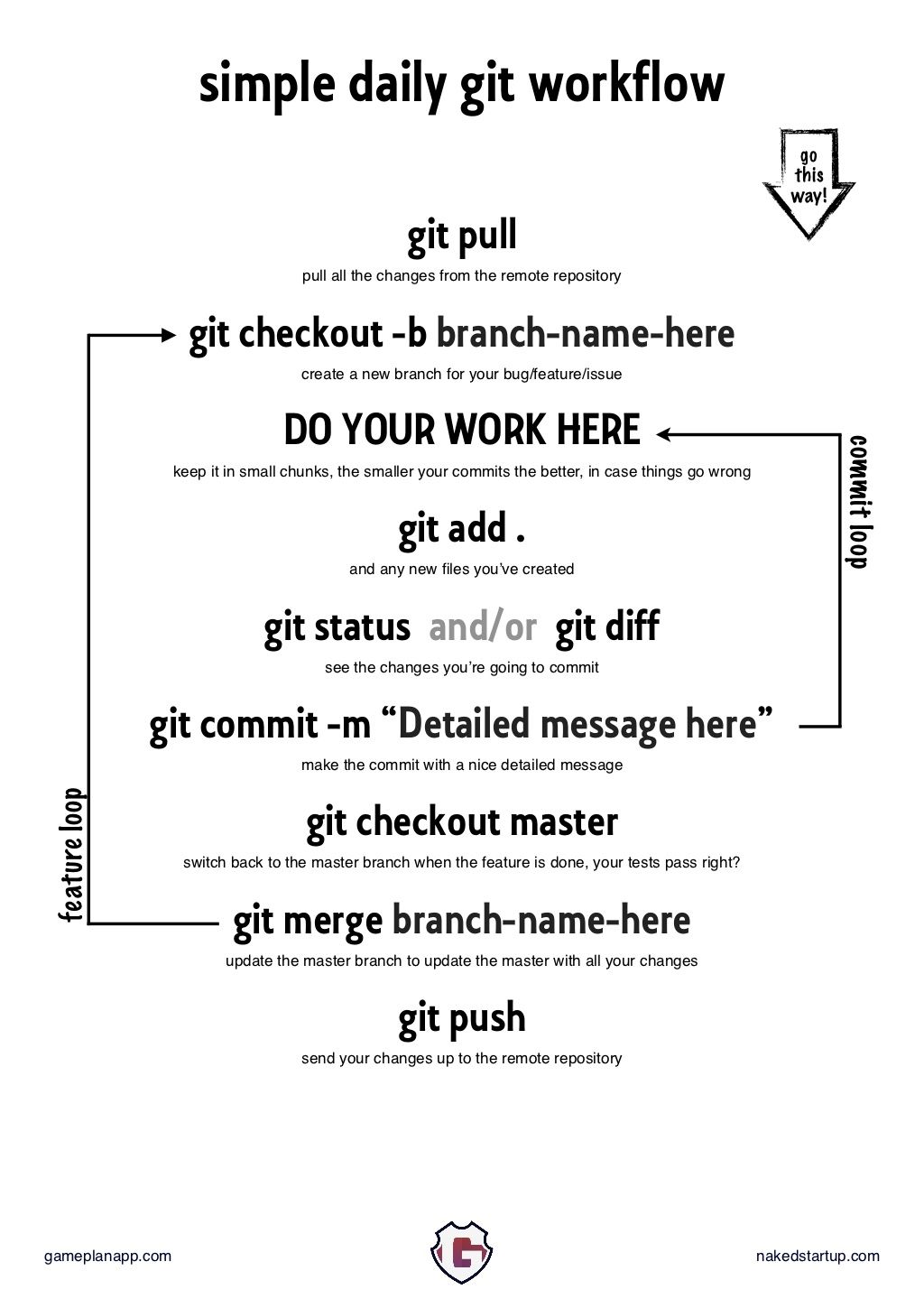Procedures
GitHub Workflow

Creating a new analysis branch
git branch Analysis-Name
Modifying an ongoing analysis branch
- Switch to the analysis branch:
git checkout Analysis-Name
- Make changes to your code as appropriate.
- To use existing files:
cp existing-analysis-file new-analysis-file
- To use existing files:
- When your code is complete, or in a good enough spot to save, commit changes to the branch:
git add new-analysis filegit commit -m "made some changes like blah blah blah"
Send your changes to GitHub
git push --set-upstream origin Analysis-Name
When all of your commits are made, back up your analysis branch on GitHub. The analysis branch code doesn’t have to be totally complete, but it should be relatively stable. This is necessary if you want to use GitHub issue tracking and code review.
Open a Pull Request
Once your analysis branch is in a stable state, checked and tested:
- Open a pull request
- Have the code reviewed by project head, discuss, etc.
- Project head should merge the completed analysis branch into master and delete the analysis branch
- Finally: update the local repository with newly merged remote master branch
git checkout mastergit pull origin mastergit branch -d analysis-name
IRB Submissions
Huron Research Suite
- Log in using NID and NID password
- Address outstanding action items in your inbox
- Create New Study
- Use new IRB template forms
- By default, add all present lab members as study personnel.
- Add Department Chair and Nichole Lighthall as Ancillary Reviewers
Recruitment
Once a study has been approved by the IRB, we can begin with recruiting participants, and scheduling sessions. Please note in your study’s protocol whether your study will be using Sona, LLRN, or any other forms of recruitment.
Sona
When you would like to recruit younger adults around the UCF campus, utilize Sona for your study’s recruitment.
- Review the Sona guidelines
- Be sure to follow all Sona rules
LLRN Database
Follow LLRN recruitment procedures
Once you have your list of participants to contact, begin contacting the individuals on your list via email or phone (if there is a preference). Please, be sure to account for their preferences in regards to being contacting, like “Time of Day,” “Phone or Email,” or “Contact Frequency.”
Update the LLRN database once you have spoken to a participant to note whether they have scheduled, declined, or left a message (or you attempted to leave a message).
Be sure to mark any other notes that are of importance, for example, if the participant no longer wishes to be contacted for studies.
Other forms of recruitment for older adults should be explicitly stated on the study’s protocol.
Scheduling
Older Adult Participants
It is very important, before scheduling an older adult participant that you verify that they meet the study’s eligibility requirements. This can be done via phone or email.
Once they appear to be eligible to participate in the study, open Google calendars to schedule their session. Be sure to keep in mind a few important facors, if applicable: the researcher’s availability or lab hours, the room’s availability, and parking availability. When you find a time and date that works best for the participant, add the event on the study’s calendar, room’s calendar, and the parking calendar - add the researcher to the Google calendar event.
Younger Adult Participants
Per SONA guidelines, younger adults should have already set their time and date per their selected Sona timeslot. ↥ Back to Top